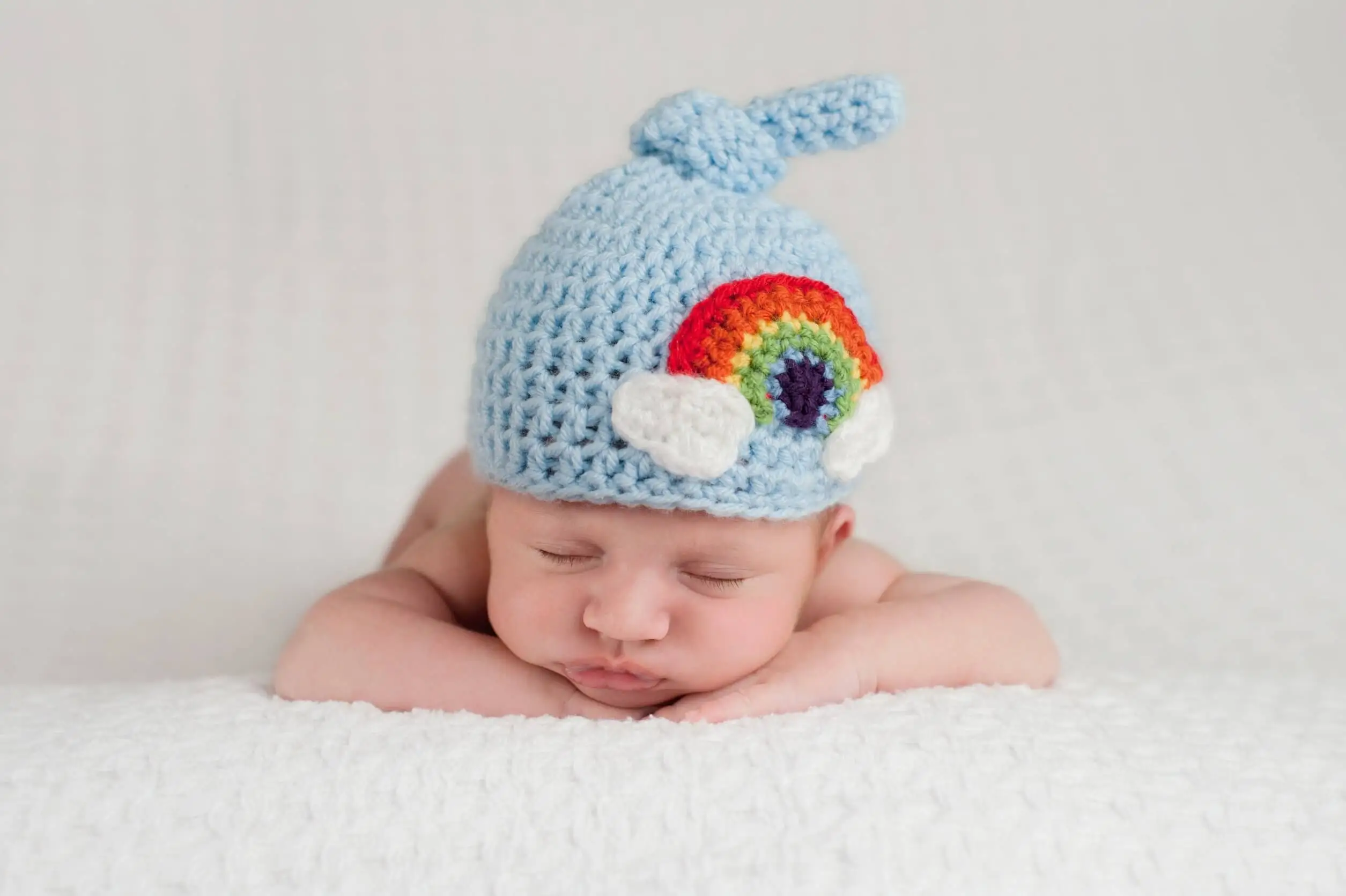Rainbow Children: The Babies that Come After the Loss of a Child


Written and verified by the psychologist Elena Sanz
Losing a child is one of the most painful experiences in life. When we refer to this loss, we also include the experience of a miscarriage. For parents, illusions collapse and grief inevitably enters their lives after this tragedy. They will have to grieve and integrate this difficult experience in the best possible way. However, the sun always rises after the storm, and sometimes, after the loss of a pregnancy, rainbow babies arrive.
Although this term is not recognized by any scientific discipline, it’s used to refer to the babies born after a miscarriage or neonatal death. They arrive to renew hope in their parents and to fill their families with light after the darkness they have experienced. If you want to know more about this topic, we invite you to read on.
Who are rainbow babies?

As we’ve already mentioned, rainbow babies are those who are born healthy after the family has lost a previous child. Their name is a symbol of hope, renewed illusion, and of new joys after a storm. And this is precisely what they mean to their parents.
According to some spiritual currents, these children possess some specific characteristics:
- They’re loving, kind, and compassionate. They’re sensitive and concerned about the people around them.
- They have a great capacity to manage their emotions. They’re able to forgive with great ease and rarely get stuck in anger.
- Rainbow babies are creative and determined. They learn easily and can easily excel in those areas that interest them.
- They’re full of energy, active, and courageous.
- It’s believed that they’re usually born into harmonious and functional families.
We think you may also enjoy reading this article: What to Do When Children Prefer One Parent Over the Other
Actually, there’s no need to label or pigeonhole children. Each one is wonderful and special in his or her own way, and the above qualities may simply be characteristic of a healthy childhood. However, keeping them in mind can help adults appreciate, consider and enhance these sometimes overlooked characteristics in their children.
Rainbow children are not substitutes or replacements

Given the uniqueness of these children who are born after the loss of a previous child, it’s important to emphasize that they do not come to substitute or fill the void. They’re independent human beings with a full right to develop their individuality and to be seen and loved for who they truly are.
For this reason, it’s very important that parents can work through their grief before seeking to get pregnant again. It’s common for their environment (friends and family) to encourage the couple to have another child as soon as possible in an attempt to help them feel better, but this isn’t healthy.
By doing this, we’re denying ourselves the right to feel the pain of the loss; we’re forcing ourselves to erase the child who was desired, expected, and loved from our history, even though they weren’t born or did not live very long. At the same time, we’re also condemning the future baby to carry certain expectations and roles and to fill certain voids that don’t correspond to him/her.
The time that each woman and each couple or family member needs to process the pain may be different. But it’s important to respect this stage, to give the child a name, and to include it symbolically in the family tree. By giving the child his or her place, by acknowledging him or her and mourning the child without guilt, without fear of judgment, and without rushing, we’re opening a healthy space for the next baby.
In fact, it’s been seen that, if this process isn’t fully or properly carried out when a new pregnancy occurs, the mother may feel guilt for having gone ahead and had a new baby. In addition, it’s possible that these feelings may stain the upbringing of this child, limiting him or her and leading him or her to being overprotected.
The calm after the storm
Although it’s a silenced reality, perinatal death is much more common than we may think. It’s estimated that, in Spain, for instance, around 2,000 babies die after 24 weeks of pregnancy and during the first month of life per year. We must also add miscarriages to this figure, which mostly occur during the first trimester.
Like this article? You may also like to read: The Thinking Chair: Is This Method Useful for Teaching Children?
In many of these cases, a new pregnancy will come, and this will generate mixed emotions. It’s very common that, in these cases, the parents fear a new loss, but at the same time feel excited and hopeful about this new life.
Fortunately, in most cases, the pregnancies and births of rainbow children are extremely healing. Then, when parents have them in their arms at last, there comes a calm and light that these parents so longed for after the darkness.
The pain of losing that departed child is terribly difficult to overcome; however, rainbow children fill their homes with joy, love, and harmony. If you’re fortunate enough to have one of these special little ones in your life, tell them their story; tell them about their departed sibling, explain how much joy their arrival brought to the family and, above all, allow them to be unburdened by the shadow of unhealed grief.
Rainbow children often become teachers of love, kindness, and joy. Allow yourself not only to enjoy being their parents, but also to learn from them and accompany them in their growth by being sensitive to that purity they bring with them.
All cited sources were thoroughly reviewed by our team to ensure their quality, reliability, currency, and validity. The bibliography of this article was considered reliable and of academic or scientific accuracy.
- Inatal. (2022). El duelo perinatal: cifras, causas y la importancia de sentirse acompañado. inatal – El embarazo semana a semana. https://inatal.org/noticias/reportajes/577-el-duelo-perinatal-cifras-causas-y-la-importancia-de-sentirse-acompanado.html
- da Silva, M. C., & Tachibana, M. (2022). Somewhere over the rainbow: narrativas de mães de crianças arco-íris. Revista da SPAGESP, 23(1), 44-58.
- Martos-López, I. M., del Mar Sánchez-Guisado, M., & Guedes-Arbelo, C. (2016). Duelo por muerte perinatal, un duelo desautorizado= Bereavement for perinatal death, unauthorized bereavement. Revista Española de comunicación en salud, 300-309.
This text is provided for informational purposes only and does not replace consultation with a professional. If in doubt, consult your specialist.








